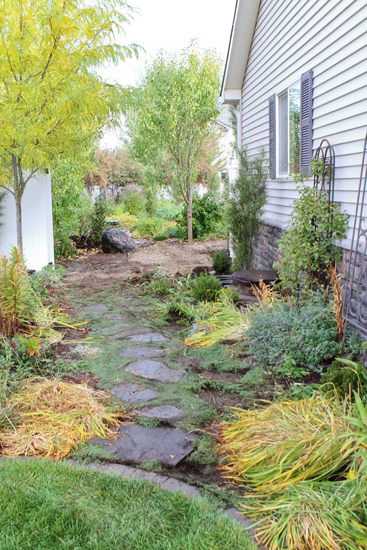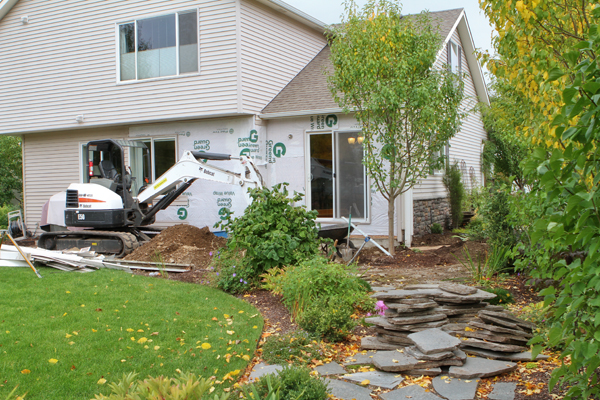Each year an especially beautiful, useful and sturdy plant is selected as Perennial Plant of the Year by the Perennial Plant Association, which is made up of landscape designers, contractors, growers, retailers, and educators in the herbaceous perennial industry. 'Rozanne' hardy geranium was selected as the 2008 Perennial Plant of the Year. In addition to this award, 'Rozanne' was selected as Plant of the Centenary at the RHS Chelsea Flower Show. Truly this is an amazing plant to receive such honors, and I have nearly twenty of them growing in my landscape.

What is it that makes this plant so useful? It grows in zones 5-8 in sun or part shade. The long bloom time is amazing - from June until an October hard frost in my garden, with no deadheading necessary. The spent flowers just curl up and disappear without leaving an ugly mess. It doesn't reseed or spread outside of its original clump. Basically it's like a perennial Supertunia - loads of color for months with very little maintenance, but then it comes back the next year.
It makes a nice companion for hydrangeas like 'Tiny Tuff Stuff,' above.
It mixes nicely with many other colors, including the steel blue of ornamental thistle (Echinops 'Ritro').
Yellow myrtle spurge (Euphorbia myrsinitis) is another good match for 'Rozanne.'
Even though it starts blooming with the roses in June, 'Rozanne' is still blooming when the Japanese anemones flower in fall.
'Rozanne' happily winds through taller shrubs like this corkscrew hazel (Corylus avellana 'Contorta').
At the end of fall when leaves from surrounding trees are falling, 'Rozanne' continues to flower until a hard frost finally sends it into dormancy for winter.
Some sources say 'Rozanne' has good fall color, but I've only noticed a little bit of red on my plants in fall. Here it is next to a 'Shasta' doublefile viburnum (V. plicatum tomentosum).
With all of these good attributes, are there any drawbacks to including a 'Rozanne' geranium in your garden? Well, it's rampant growth might be a challenge in a small garden. Some sources suggest planting it 12" apart, but I think that's much too close. In the first year after planting it may stay in a small clump like the one above . . .
. . . but a few years after planting it may grow to six feet wide, like the plant above in my front yard. Unlike many other groundcovers, the stems don't root at nodes. And as I mentioned earlier, 'Rozanne' doesn't send out spreading rhizomes or reseed. The plant will die back to the ground in winter and start growing in spring from a small clump, but those stems sure grow long by the end of the season! I'd recommend giving it at least three feet of room to grow, and even then you'll need to trim it back before the end of the season.

Another challenge with 'Rozanne' is finding the perfect amount of light. This plant is too shaded, so you can see how it's grown too tall and flopped over to expose the unsightly base. But with too much hot sun or not enough water the leaves will get scorched by midsummer. You can cut it back hard after a heatwave has left it crunchy and it will sprout fresh leaves. But my plants that grow in morning sun with afternoon shade keep a nice shape and fresh leaves throughout the growing season.

'Rozanne' is not reliably deer resistant, so it might not be the best choice if you have deer problems. It does attract lots of honey bees and bumble bees, so if you're allergic you shouldn't plant this in your yard. But I recommend this plant to almost all of my friends for their gardens. Even if it requires a little trimming to control the size, its long season of color with little maintenance makes it a valuable addition to nearly every garden. It is one of my favorites, and well deserving of the honors it has received.
























































